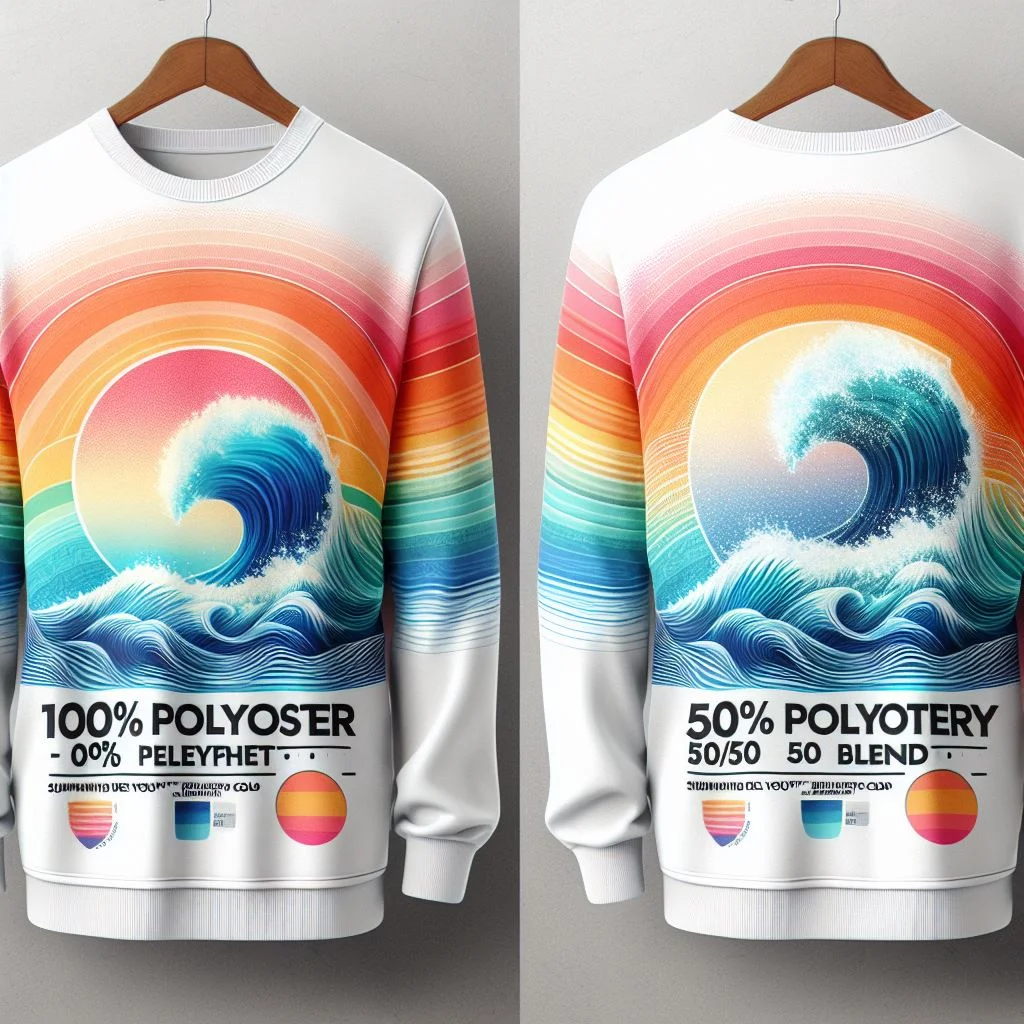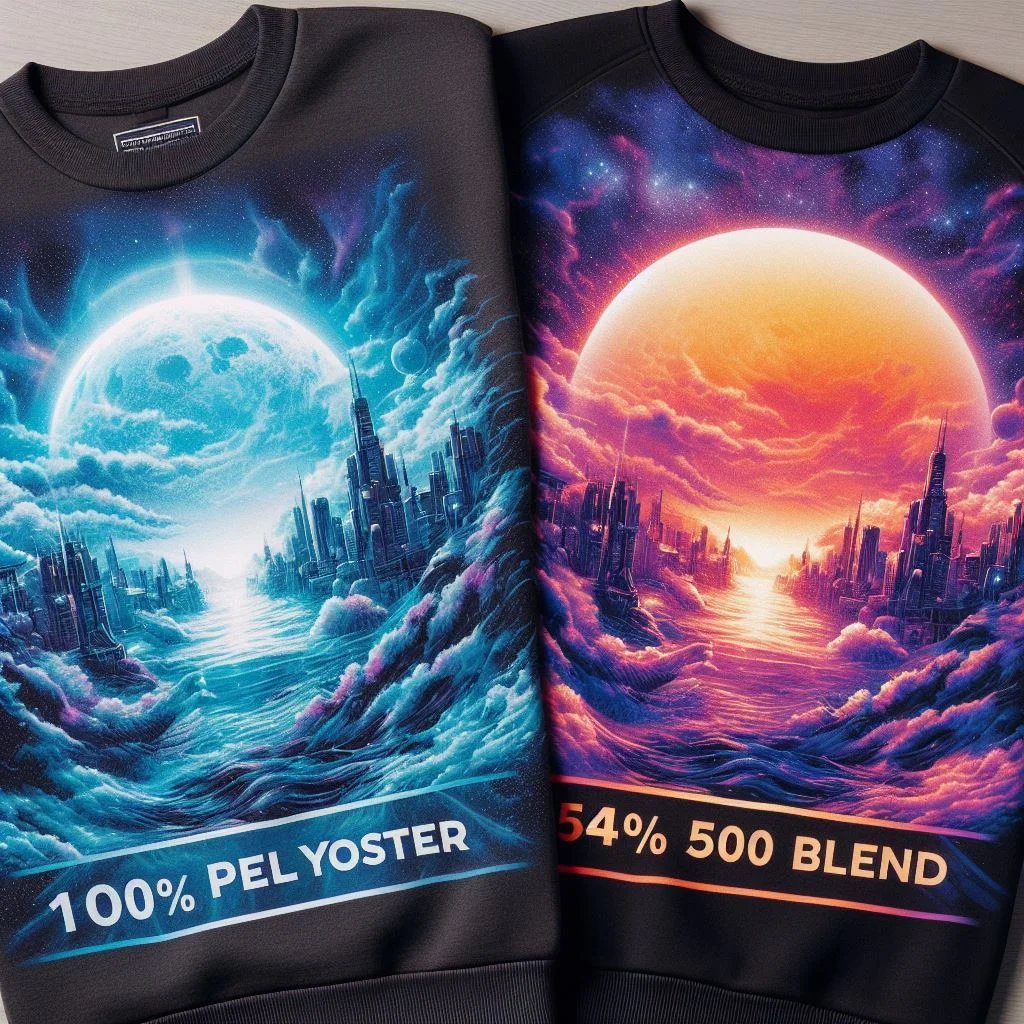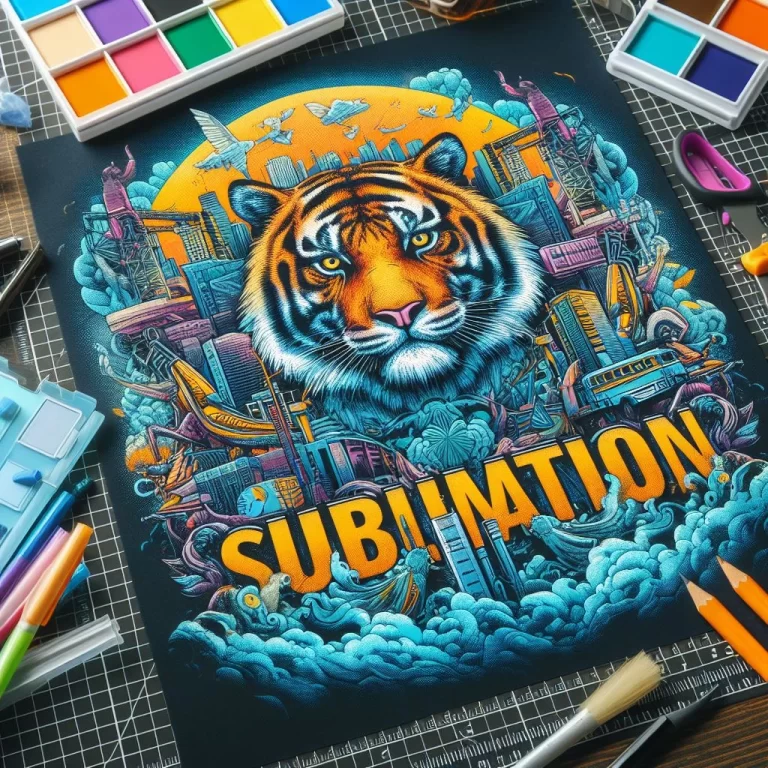Can You Sublimate on 50/50 Cotton-Polyester Blends? The Honest Answer + Tips
Want to sublimate on 50/50 cotton-poly blends? It’s possible! Achieve beautiful results with a vintage twist. Learn key settings & tricks for successful sublimation on cotton blends.
Sublimation printing is a fantastic way to add vibrant, long-lasting designs to apparel and other items. While 100% polyester offers the absolute best results, many people love the softness and breathability of 50/50 cotton-polyester blends.
So, can you still use sublimation on these fabrics? The answer is yes, but to get the best results, it’s important to understand a bit about how sublimation works.
Brief Explanation of Sublimation Science
Sublimation ink is special because it transforms from a solid to a gas when heated, bypassing the liquid stage. This gas bonds with polyester at the molecular level, permanently infusing the fabric with the design.
Cotton fibers, being natural, don’t react the same way, which is why 100% polyester is the ideal choice for the most vibrant sublimation results.

The Results: What to Expect
- Embrace the Vintage Vibe: Sublimating on 50/50 cotton-polyester blends will naturally create a softer, vintage, or distressed look. This isn’t a flaw – it’s a unique aesthetic with its charm! Emphasize this as a positive and a potential selling point.
- Visual Examples are Key: Include clear before-and-after images showcasing the difference in vibrancy between a 50/50 blend and 100% polyester with the same sublimation design. This sets realistic expectations for your readers.
- Managing Expectations About Fading: Be honest about the fact that some fading will occur with washing, especially on darker-colored blends. Explain that while the design won’t disappear, the initial vibrancy will soften over time. You can offer tips on gentle washing to minimize fading.
Key Settings & Tips
| Setting/Tip | Description |
|---|---|
| Pre-Treatment | Apply a polyester pre-treatment spray to the fabric before sublimating to enhance ink absorption. |
| Temperature | Set your heat press to a lower temperature (around 375°F) to prevent scorching the cotton fibers. |
| Time | Increase the pressing time slightly to ensure thorough ink transfer, typically around 30-40 seconds. |
| Pressure | Apply medium to firm pressure to ensure good contact between the transfer paper and fabric. |
| Cooling Time | Allow the garment to cool completely before removing the transfer paper to prevent smudging. |
| Design Choice | Opt for designs with a vintage or distressed look, as slight imperfections can blend well with cotton. |
| Quality Ink | Use high-quality sublimation ink to ensure vivid colors and long-lasting results on cotton blends. |
| Testing | Always perform a test run on a scrap piece of fabric to fine-tune settings before sublimating the final item. |
Additional Notes
- Color Choices Matter: Lighter 50/50 blends (white, heather gray) will generally show better sublimation results than darker colors. Mention this to help guide your readers.
- Framing is Everything: Present the vintage look as a desirable style. For example, “Looking for that perfectly worn-in t-shirt vibe? 50/50 sublimation gives you that right out of the press!”
Tips for Successful 50/50 Sublimation
- Finding the Sweet Spot: Optimal Temperature & Time
- While settings vary slightly between heat presses, start with a slightly lower temperature (around 375-385°F] and a shorter press time (30-40 seconds) compared to 100% polyester sublimation.
- Recommend experimentation in small increments to find what works best for the user’s equipment and specific blend.
- The Right Paper Matters
- Mention that not all sublimation papers are equal for 50/50 blends.
- Recommend papers designed for mixed fabrics. These often have a slightly “tacky” feel to help the ink adhere better.
- You may want to name a few reputable brands if “Subli Genus Print” carries them.
- Preventing the Bleed
- Explain what causes ink bleeding/ghosting during sublimation.
- Offer techniques:
- Use parchment paper or a Teflon sheet inside the shirt to prevent transfer to the back.
- Avoid Teflon pillows, which can cause ink to re-vaporize and blur the design.
- Customer Communication is Key
- Reiterate the importance of upfront communication about the unique results of 50/50 sublimation.
- Consider offering image mockups that preview the vintage look to ensure the client understands the aesthetic.
- This builds trust and prevents disappointment.
[wps_alert type=”primary”]Extra Tip: You could include a short note about choosing designs wisely for 50/50 blends. Bold graphics and simpler designs often translate better than intricate details that can get lost with softer results.[/wps_alert]
Sublimation Statistics and Industry News
The Industry is Booming
- The sublimation printing market is getting bigger and is expected to keep growing steadily in the coming years.
- This is because more and more people want unique, personalized clothing, sports gear, and home decorations.
Cotton is Getting Popular
- People like soft, comfy fabrics, so there’s a growing trend of using sublimation printing on cotton mixed with other materials (cotton blends).
- Companies are coming up with new inks and ways to make sublimation work even better on these cotton blends.
Technology is Improving
- New special heat presses and papers are being made just for printing on cotton blends.
- These new tools will make sublimation printing on cotton blends work better and produce higher-quality results.
Going Green
- Companies care about the environment! They are using eco-friendly inks and finding ways to recycle materials used in the sublimation process.
- Customers want products made in ways that are good for the planet, so this is an important trend.
Conclusion:
While 100% polyester will always be the gold standard for the most vibrant sublimation results, don’t underestimate the beauty of 50/50 blends! By understanding the process and adjusting your technique, you can achieve stunning designs with a softer, vintage charm.
The key is to embrace the unique aesthetic of 50/50 sublimation. It’s perfect for t-shirts with a lived-in feel, retro-inspired designs, and customers who value the comfort of blended fabrics. With a little experimentation and the right approach, the possibilities are exciting!




